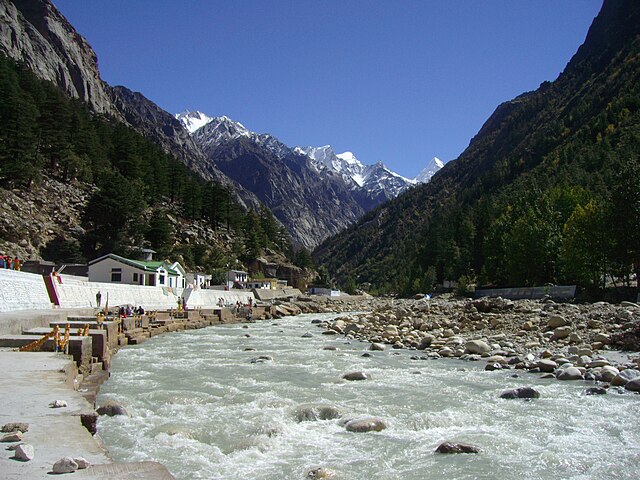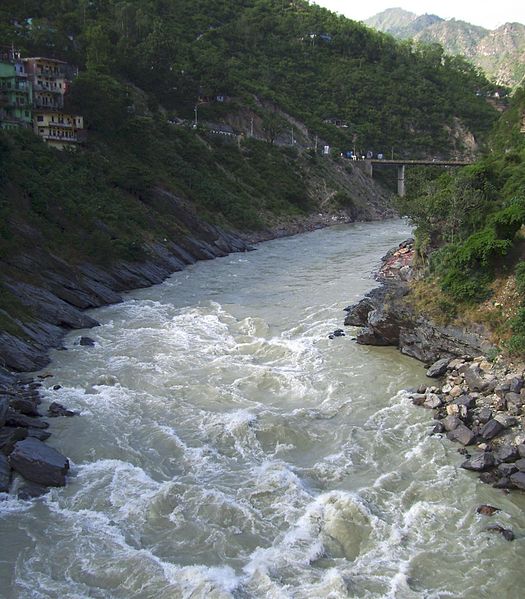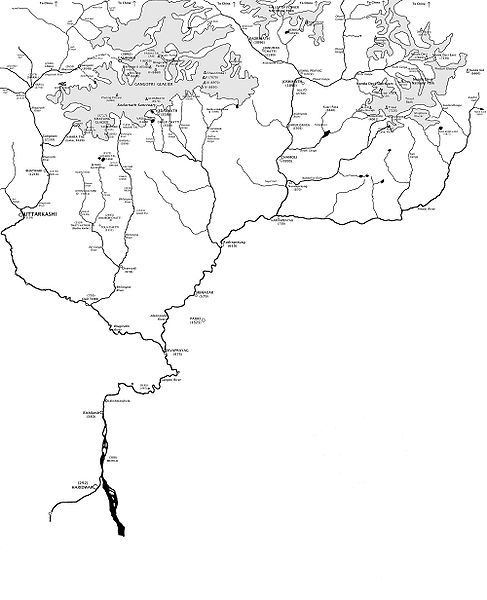The Bhāgīrathī is a turbulent Himalayan river in the Indian state of Uttarakhand, and one of the two headstreams of the Ganges, the major river of Northern India and the holy river of Hinduism. In the Hindu faith, history, and culture, the Bhagirathi is considered the source stream of the Ganges. However, in hydrology, the other headstream Alaknanda, is considered the source stream on account of its great length and discharge. The Bhagirathi and Alaknanda join at Devprayag in Garhwal and are thereafter known as the Ganges.
Sacred bathing ghats on Bhagirathi River at Gangotri
The turbulent Bhagirathi as it enters Devprayag.
The Bhagirathi (foreground) on its way to meet the sediment-laden Alaknanda, and to flow on as the Ganges.
Another view of the confluence at Devprayag.
The Ganges is a trans-boundary river of Asia which flows through India and Bangladesh. The 2,525 km (1,569 mi) river rises in the western Himalayas in the Indian state of Uttarakhand. It flows south and east through the Gangetic plain of North India, receiving the right-bank tributary, the Yamuna, which also rises in the western Indian Himalayas, and several left-bank tributaries from Nepal that account for the bulk of its flow. In West Bengal state, India, a feeder canal taking off from its right bank diverts 50% of its flow southwards, artificially connecting it to the Hooghly River. The Ganges continues into Bangladesh, its name changing to the Padma. It is then joined by the Jamuna, the lower stream of the Brahmaputra, and eventually the Meghna, forming the major estuary of the Ganges Delta, and emptying into the Bay of Bengal. The Ganges–Brahmaputra–Meghna system is the second-largest river on earth by discharge.
The Ganges in Varanasi
Bhagirathi River at Gangotri.
Devprayag, confluence of Alaknanda (right) and Bhagirathi (left), and beginning of the Ganges.
The Himalayan headwaters of the Ganges River in the Garhwal region of Uttarakhand, India.







